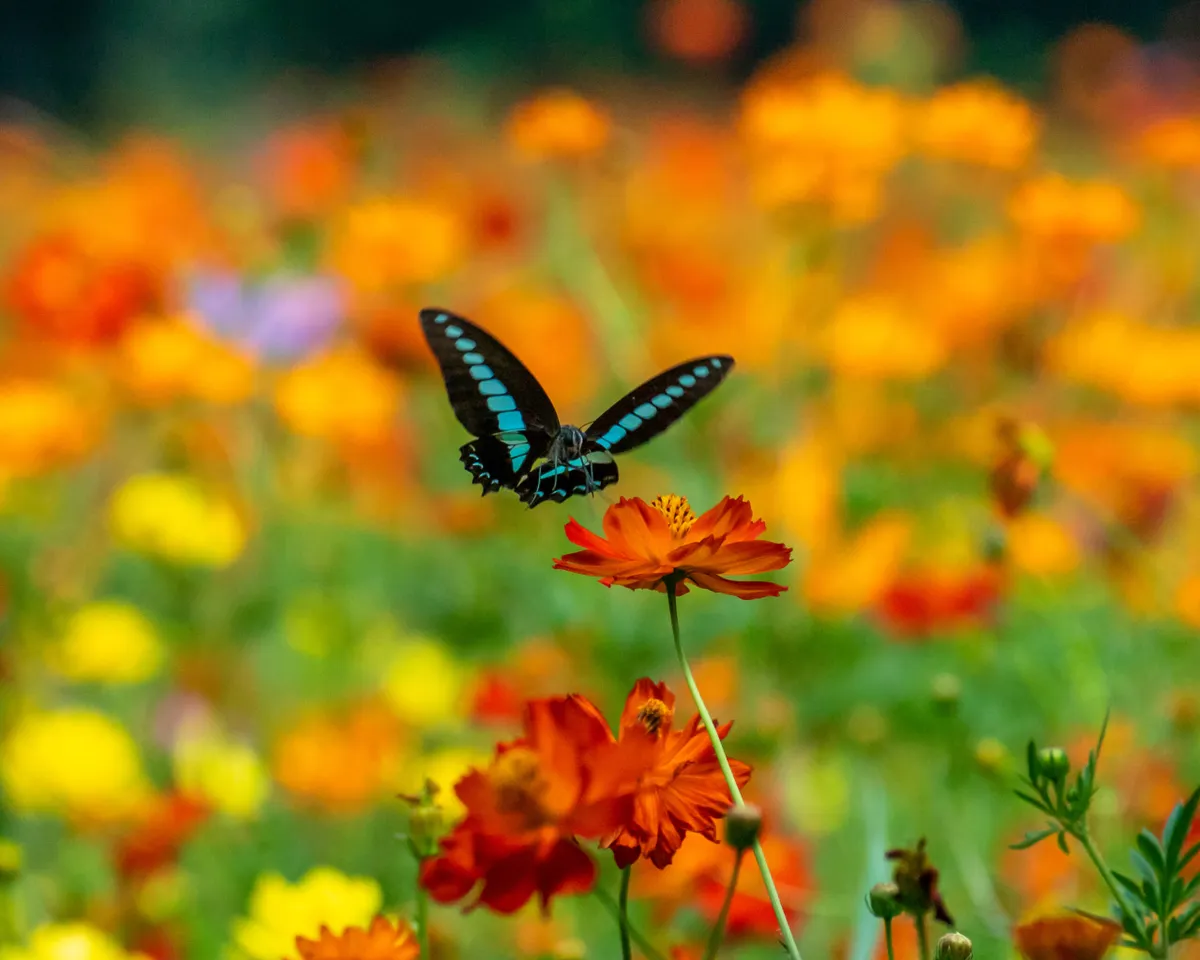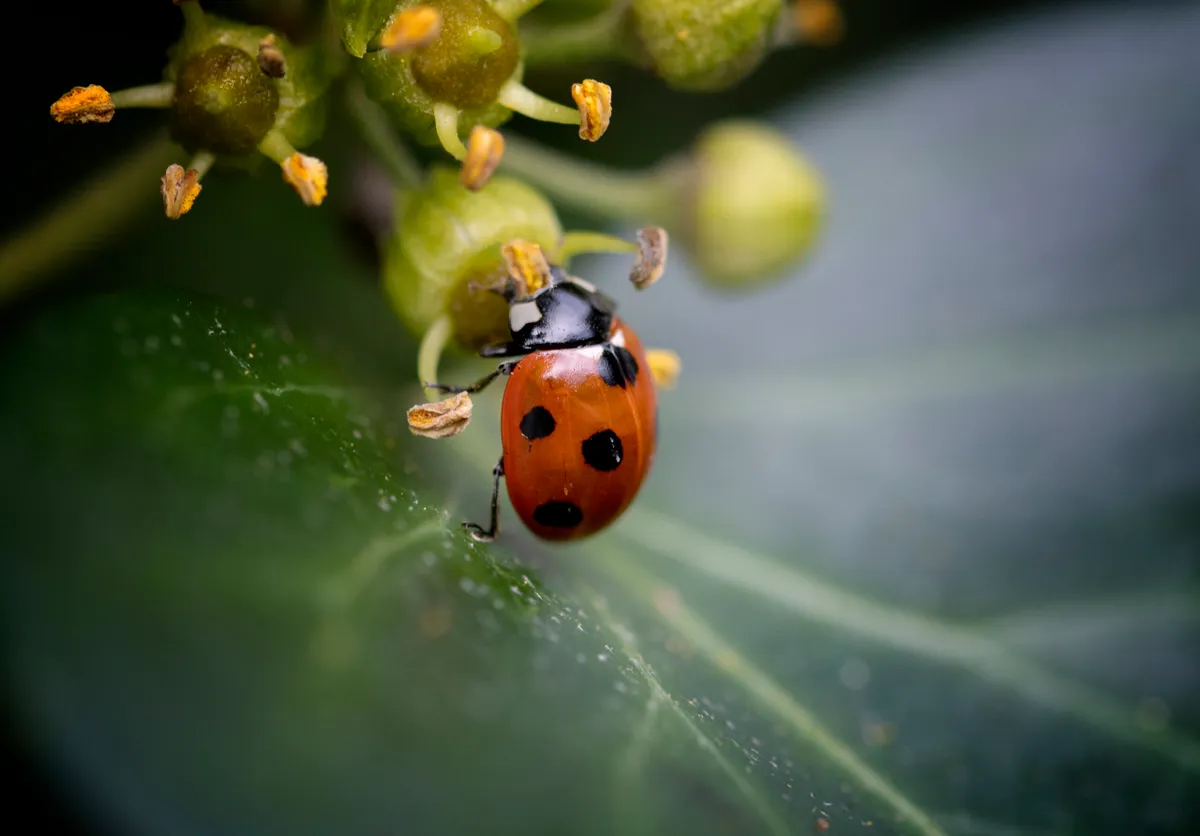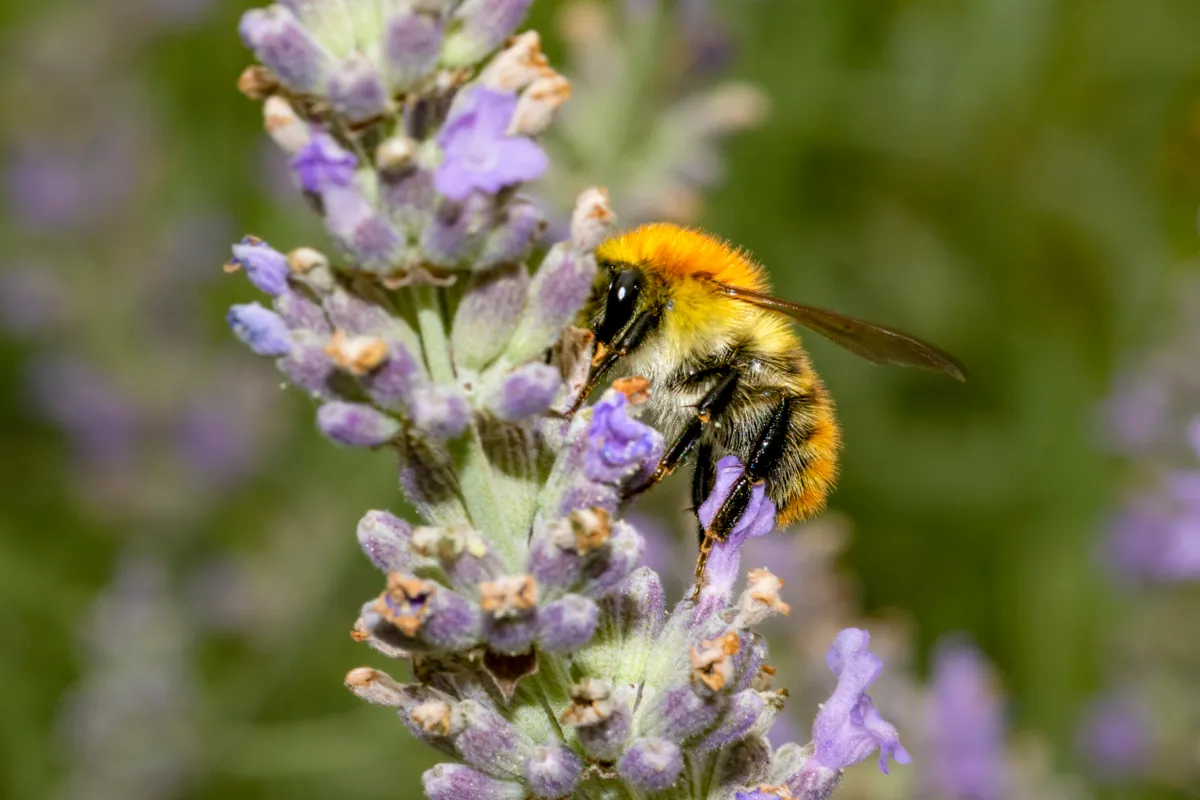When it comes to our garden wildlife, it’s important to know what’s what. It’s a sad truth that people are effectively blind to the critters they can’t identify. Even the big insects can be confusing for some: we might think we all know what a wasp looks like, but often honey bees have been mistaken for wasps and the pest controller called rather than a local apiarist.

Fortunately, in this digital age of smartphone apps, image recognition software and online ID guides, it’s never been easier to tell different species apart. “Knowing what things are is essential, and naming them is the first step,” says ecologist Dr Mike Wells, director of Biodiversity by Design. “If you don’t know it’s a stag beetle, you’re not going to be able to discover all the wonders of the thing.”
Since 1970, much of Britain’s biodiversity has tumbled off a cliff, with 41 per cent of UK plant and animal species in decline. Once common garden creatures now appear on lists of conservation concern: hedgehogs, red squirrels (since the Victorians introduced the grey); house martins, mistle thrushes, swifts and greenfinches; atleast six of our 18 native bat species; and half of our butterflies.
Monitoring this gloomy picture has become a national obsession. Every year, thousands of ‘citizen scientists’ take part in Buglife’s Bugs Matter survey – a grisly splatter-count of insects brought to rest on car number plates. There are audits of the living, too: the Big Butterfly Count; the UK Ladybird Survey; BeeWalk; the UK Pollinator Monitoring Scheme; the Big Hedgehog Map; and the Great Stag [beetle] Hunt among them. The RSPB’s Big Garden Birdwatch is the largest of them all, attracting some 540,000 volunteers this year.
As humans, our sense of place affects us deeply and psychologically
“These days there’s a feeling that there’s not much we can do, which leads to a sense of despair,” says Mike. “But data we collect locally can be sent to contribute to national databases to reveal trends across large areas, and by making an inventory of our garden wildlife, learning our patch and studying our gardens, we begin to see everything with fresh eyes. Doing this helps cure something called ‘locational autism’ – defined as knowing where we are, but not knowing where that is. As humans, our sense of place affects us deeply and psychologically. So, beyond the science, beyond the knowledge of biodiversity, there’s one good reason to study your garden and the creatures within it.”

Why do a biodiversity audit?
Monitoring garden wildlife isn’t just about measuring its decline; you can also gauge the positive impact of environmental activities, such as adding a wildlife pond, building a bug hotel or pursuing No-Mow May. At Great Dixter in East Sussex, ecologist Andy Phillips led a two-year audit (2017-2019) to assess a range of wildlife-friendly interventions, from turf roofs and bug hotels to new meadow-mowing regimes.
Biodiversity isn’t just about a few select species, but an integrated world with all parts impacting on each other
“Our efforts had seemed fragmented and incomplete,” says head gardener Fergus Garrett, who commissioned the study. “Dabbling in a few things here and there didn’t give us a handle on the overall picture. Biodiversity isn’t just about a few select species, but an integrated world with all parts impacting on each other. No one was considering spiders, beetles, ants, hoverflies, flies, lichens, mosses and liverworts. We needed a comprehensive study to understand everything – then target our management appropriately.”
And the audit paid off. Among the 2,029 species recorded at Dixter were two nationally endangered mining bee species, the white-bellied mining bee Andrena gravida and oak-mining bee Andrena ferox, as well as the amazing purple emperor butterfly Apatura iris (pictured below), which declined in much of the UK over the 20th century.

While some audits provide a one-off snapshot, others chart changes over time. At Knepp Castle Estate in West Sussex, comparison surveys have been made every year since rewilding began in 2001. More recently, the walled garden, designed by Tom Stuart-Smith with James Hitchmough, has been subject to some key baseline studies. “We’ve looked at the invertebrates, birds and butterflies using transects,” says head gardener Charlie Harpur.
“These are fixed stations on a survey route through the garden. We’ve also taken soil profiles for analysis and used a microscope to survey the microfauna – bacteria, fungi, protozoa, amoeba, ciliates,
flagellates and so on. We aim to return to the same sample locations year on year, to see how our soil biome changes.”
Creating valuable habitats
Inspired by the Dixter findings, landscape designer Dan Pearson and his partner Huw Morgan commissioned an audit of Hillside, their 20-acre smallholding and garden near Bath, in 2022. “The
broad findings were that our improved sheep pasture is the least valuable for wildlife, while the managed native meadows are some of the most valuable habitats and are home to the nationally rare
large scabious mining bee, Andrena hattorfiana,” says Huw. “We also have a wet ditch with constant clean water flow that supports a very wide range of invertebrates.

“Encouragingly for us as garden designers, two nationally scarce and quite locally distributed species of insect – the large yellow-faced bee (Hylaeus signatus) and the ruby-tailed wasp (Chrysura radians, pictured above) – were only found in our ornamental flower garden, where almost all the plants are non-native.”
An audit is a big undertaking usually managed by professional ecologists and typically done on a larger site than a domestic garden, but gardeners can gain a deeper understanding of their plots and the
habitats they offer by observing and documenting the wildlife they see in their lawns, beds, hedges and walls.
How to identify garden wildlife
Ecologist Mike Wells led the survey at Hillside, and has some good advice if you’re tempted to audit your own garden. “Wading through a load of identification books can be overwhelming. Instead, start with the books that feed your enthusiasm: Michael Chinery writes about all the wildlife of the garden, so you can see what might interest you.
“You’ll also need a good, high-resolution smartphone camera so you can submit photographs to specialist websites and groups on social media, where experts will be happy to identify things for you.
Or join your local natural history group or Wildlife Trust. There are lots of useful smartphone apps to identify things and they’re improving all the time.” A close-focusing lens (or loupe) and a pair of close-focusing binoculars are helpful too.
Whatever helps us understand our place in the world and helps us connect with nature is undoubtedly good. It’s incredibly joyful
Keep a detailed list or spreadsheet of your findings. “Some groups of British wildlife are not too diverse to get your head around,” he says. “For example, we have only six native reptiles, seven native amphibians, about 18 bats, around 40 mammals and around 60 species of butterfly. Only a fraction of the UK’s 600-plus bird species will visit your garden, and there are plenty of keen birders who can help. The real challenge comes with the creepy crawlies – 6,000-odd species of invertebrates have been recorded in the UK. It’s a bit annoying that the most important faunal group, from a biodiversity point of view, is also the most challenging.”
The secret is to build a network of knowledgeable friends you can ask for help. “There’s no way you could learn to identify more than a tiny percentage of the species on our planet,” says Mike. “It’s not about having perfect knowledge or ticking them off on a list. Knowing what’s in your garden, and being able to name it, goes far deeper. Whatever helps us understand our place in the world and helps us
connect with nature is undoubtedly good. It’s incredibly joyful.”

How to do a biodiversity audit of your garden
If you’re tempted to record your own garden’s biodiversity, group your wildlife into categories to make the audit easier.
Count the birds
Start with creatures you know and recognise – birds, perhaps. The Big Garden Birdwatch technique is to set aside an hour to count only the birds that land in your garden, watching from a window. Just count the highest number of any species you see at any one time, to avoid counting any bird twice. For example, if you saw a group of four starlings, and towards the end of the hour you saw two starlings together, your final count would be four, not six. The RSPB has a useful ID guide complete with tally boxes to use, which you can download from its website.
Identify insects
Insects are more challenging – there are 6,000-odd species of invertebrates in the UK, and it would take a lifetime to learn them all. Decide what level of detail you want and conduct your count accordingly. For instance, you might like to identify and count the pollinators that visit a particular nectar-rich plant. First,
set time aside to write down the insects you do recognise and take photos of any you don’t. Use Google or a smartphone app such as iNaturalist to help create a list of the regular visitors.

Once you’re feeling confident, make a Flower Insect Timed (FIT) Count. Choose a warm day and mark out a sunny 50cm x 50cm ‘quadrat’ survey area and set a timer for ten minutes. Tally each insect by placing a mark next to their name on your list, taking care to only count them once. To simplify matters, you could just identify the insects into their broad groups (bumblebees, hoverflies etc) and any you don’t recognise, count as other insects.
For ground-dwelling invertebrates, make a transect. This is typically a 5m line of string stretched taut across a survey area and secured with garden canes or tent pegs. Here you can record any beetles, worms, ants etc that you find along its length. For a more integrated picture, why not create a transect path around your garden with 50cm x 50cm quadrats as key ‘survey stations’ en route. Take a soil sample at one of the points to assess soil pH, texture, organic matter and earthworm activity for a more holistic picture.
You can use many other techniques – from pond dipping using a net and ID tray, to moth trapping using a sheet and torch at night – but take care not to harm your subjects. To make your data meaningful,
repeat on the same day in a year’s time to compare results.
Useful kit for a biodiversity audit
Heterodyne Bat Detector
This contains a microphone that can pick up ultrasonic bat calls, which the detector then converts into an audible output.
Buy a heterodyne bat detector from the RSPB (£80.00)
Wildlife or ‘trail’ camera
This uses an infrared sensor to pick up movement that triggers the camera to take and store photographs or videos automatically. Night recording is possible using infrared LEDs. They can be powered by rechargeable batteries, and controlled via a smartphone app.
Here are the best wildlife cameras to buy.
Moth trap
This involves using a bright light with emissions in the UV part of the spectrum illuminating a white sheet to lure in the moths at dusk. Identify and, if you like, count them, but be careful not to harm them.
Browse conservation moth traps at NHBS.
Soil tests
Simple soil test kits are available from most good garden centres and online garden retailers. Here are some of our favourite soil pH testers.
Read more about the results of Great Dixter’s biodiversity audit.





